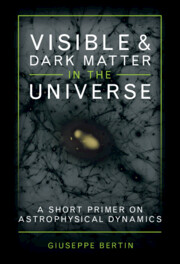Book contents
- Frontmatter
- Dedication
- Contents
- Preface
- Acknowledgements
- Part I Visible Matter
- 1 Light
- 2 Optical Astronomy
- 3 Radio Astronomy
- 4 X-Ray and Gamma Ray Astronomy
- 5 Astroparticle Physics, Gravitational Waves, and Space Physics
- Part II Dark Matter
- 6 Galaxies
- 7 The Supermassive Black Hole at the Center of the Milky Way
- 8 Two Precursors of the Problem of Dark Matter
- 9 The Discovery of Dark Halos around Spiral Galaxies
- 10 The Cosmological Context
- Index
2 - Optical Astronomy
Published online by Cambridge University Press: 08 December 2022
- Frontmatter
- Dedication
- Contents
- Preface
- Acknowledgements
- Part I Visible Matter
- 1 Light
- 2 Optical Astronomy
- 3 Radio Astronomy
- 4 X-Ray and Gamma Ray Astronomy
- 5 Astroparticle Physics, Gravitational Waves, and Space Physics
- Part II Dark Matter
- 6 Galaxies
- 7 The Supermassive Black Hole at the Center of the Milky Way
- 8 Two Precursors of the Problem of Dark Matter
- 9 The Discovery of Dark Halos around Spiral Galaxies
- 10 The Cosmological Context
- Index
Summary
Progress in astronomy is associated with the construction of new telescopes
and new instruments. This chapter only mentions a few selected initiatives of interest,
to give a flavor of the tools that astronomers are considering for optical observations from the ground and from space. Similarly, on the side of science, this chapter examines only one major set of observations from space, the so-called Hubble Deep Fields, and then proceeds to outline a landmark discovery made at the turn of the century, that is the observations of distant supernovae that have led to convincing evidence that the universe is not only expanding, but, at the present epoch, is actually accelerating. A large investment, not only in the field of optical astronomy, is being made in placing telescopes at special locations very far from Earth. These special sites correspond to Lagrangian points, that is, equilibrium points of the restricted three-body problem for the Sun-Earth system. At the end of this chapter, a digression is made on these concepts, which also allows us to introduce the tidal radius, one concept frequently used in dynamical astronomy.
Keywords
- Type
- Chapter
- Information
- Visible and Dark Matter in the UniverseA Short Primer on Astrophysical Dynamics, pp. 22 - 36Publisher: Cambridge University PressPrint publication year: 2022

